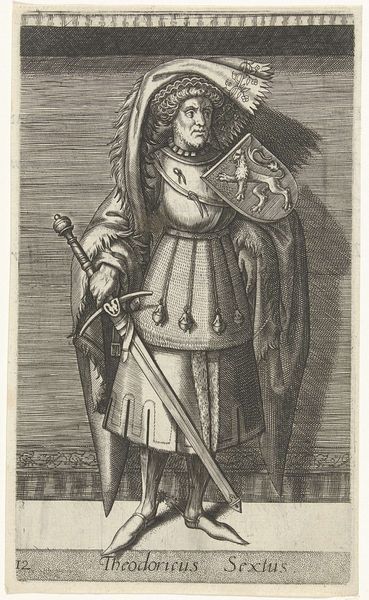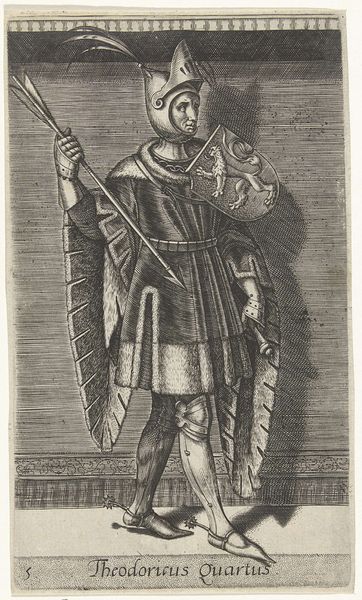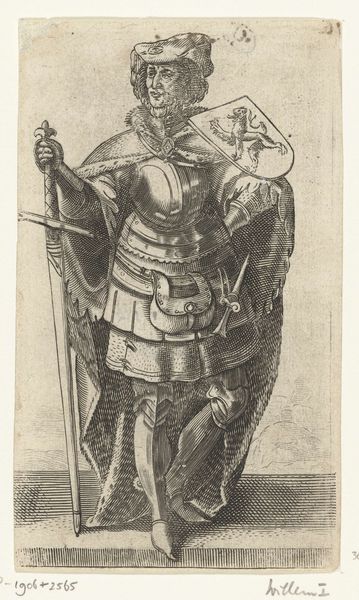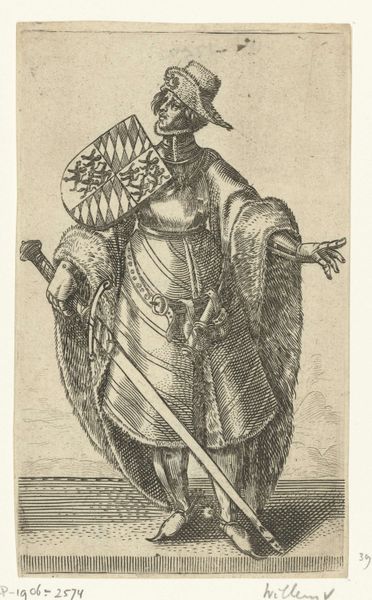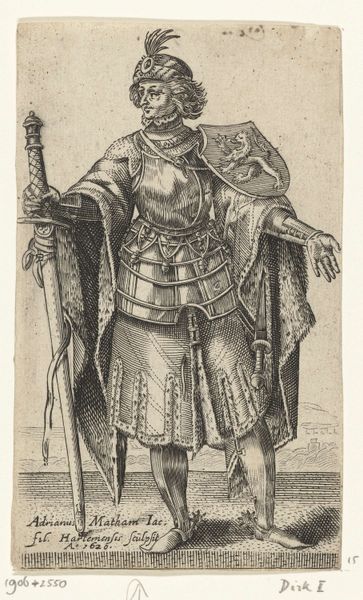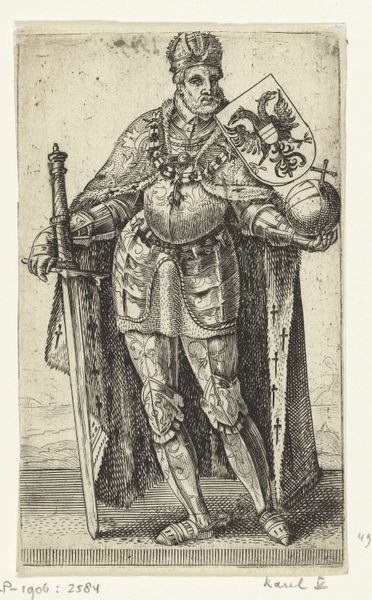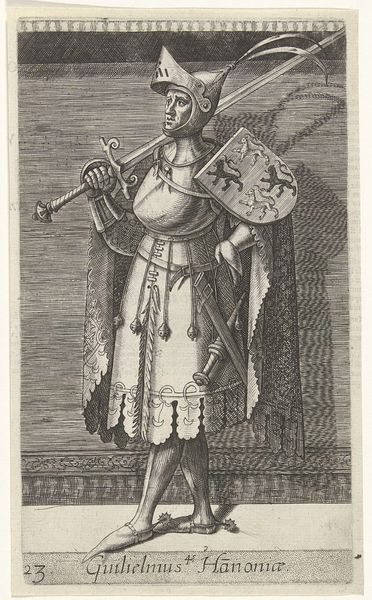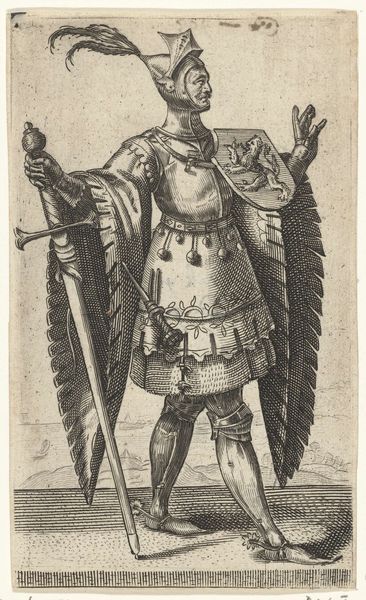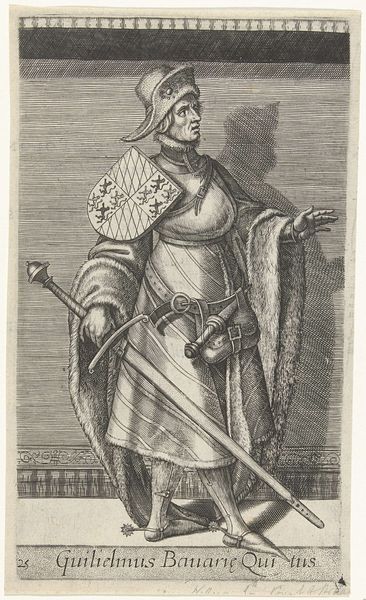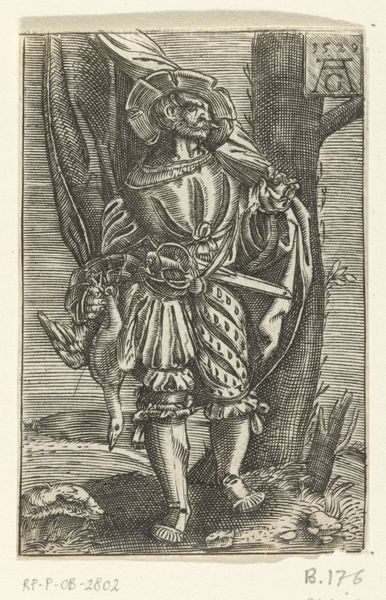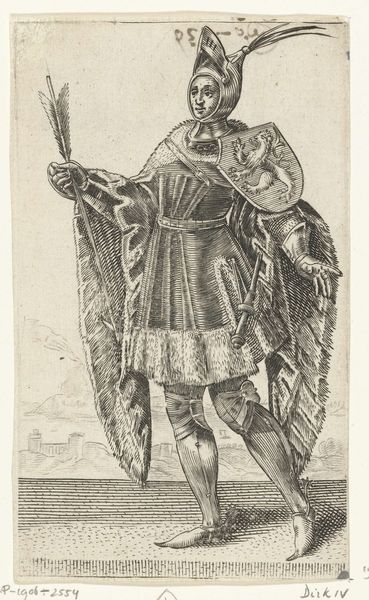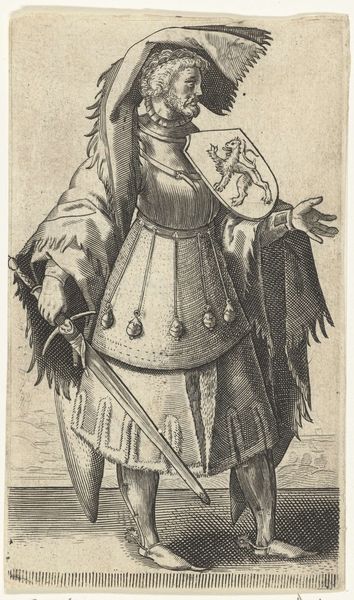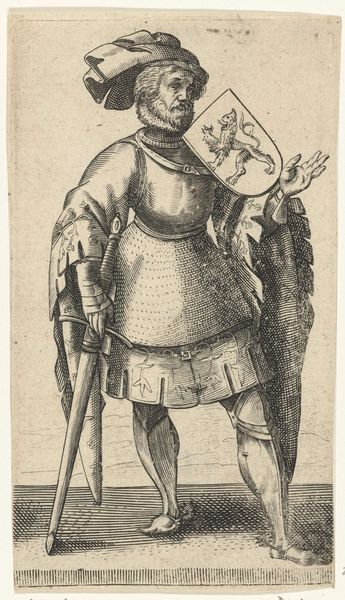
print, engraving
#
portrait
# print
#
history-painting
#
northern-renaissance
#
engraving
Dimensions: height 205 mm, width 119 mm
Copyright: Rijks Museum: Open Domain
Curator: Here we have Philips Galle's "Portret van Willem I, graaf van Holland," created in 1578. Editor: It's striking how stiff the figure is, almost mannequin-like. The level of detail on the clothing contrasts sharply with the plain background. What statement is made in production, or perhaps what's omitted from the construction? Curator: Considering its time, it's critical to view this as a form of political representation, intended for circulation. Think about William I's role in the Dutch Revolt. This image works as a visual statement legitimizing his authority, an assertion of identity, especially against Spanish rule. The very act of commissioning and disseminating prints speaks volumes about power. Editor: Agreed. And look at the meticulous engraving – the layers of fabrics, the gleaming metal of the sword. These weren't created in a vacuum, Galle surely depended on workshops employing skilled artisans using metal tools. The prints themselves would be consumed and displayed, functioning within systems of trade. I want to know how it ended up here, and who held the printing plates, how long were they used, who were the patrons? Curator: It prompts an exploration of the artist's perspective as well. As an artist working in the Northern Renaissance, Galle's visual language intersects with notions of power, but the way he depicts Willem raises questions. Did his identity intersect with William’s authority, or was he bound by constraints of patronage, class and societal expectation? Editor: Yes. It really underlines the complexity of printmaking as both an artistic practice and an industrial activity with significant cultural impact. And it is very impressive work—I’m still marveling at that heavy cloak and shadow; you can feel the labor involved. Curator: And ultimately, in portraying Willem as a symbol, Galle engages in the politics of image-making during times of social upheaval and ideological conflicts. The questions raised by it still echo strongly today, centuries later. Editor: The ways things are produced shape their meaning, from Galle's tools to our interpretations here, don’t they?
Comments
No comments
Be the first to comment and join the conversation on the ultimate creative platform.
